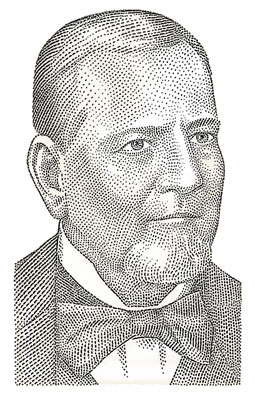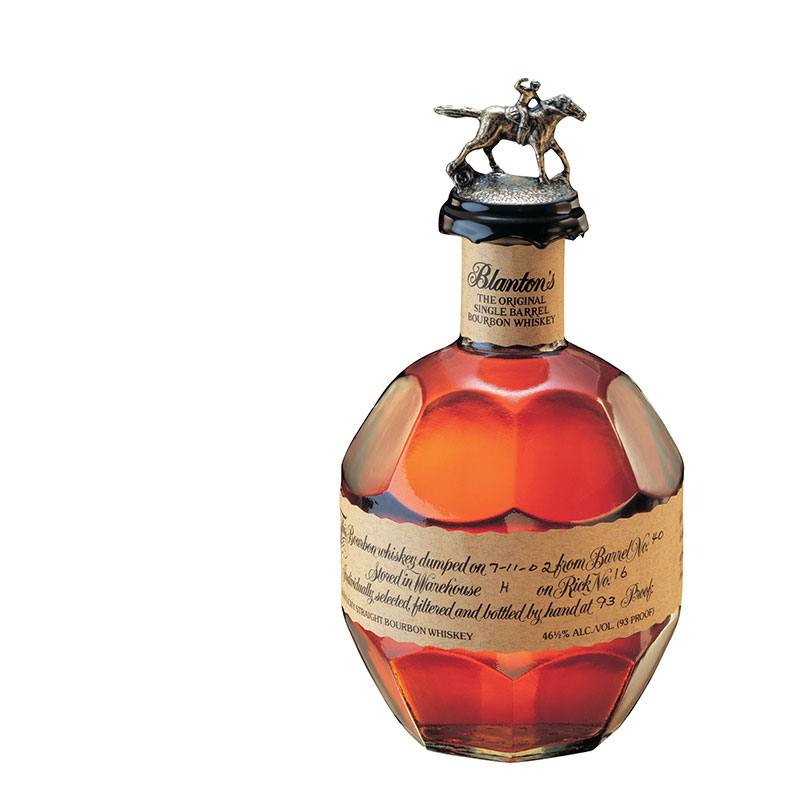
OLD WELLER ANTIQUE 107 BOURBON
Proof: 107
Age: 7 Years Old +/-
Who Makes Old Weller: Sazerac/ Stitzel-Weller Distilling Company at Buffalo Trace
Master Distiller: Harlen Wheatley
This review has been a long time coming.
Old Weller Antique 107 is a spectacular value and a fantastic bourbon in an overcrowded field of generally unimpressive bourbons. I freakin’ love the whole WL Weller lineup, and any real bourbon enthusiast shares my enthusiasm with good reason: W.L. Weller has the exact same wheated mash bill as Pappy Van Winkle. Not that being associated with the most overhyped bourbon in history Pappy is a benchmark for quality, but W.L. Weller possesses some unique elements coupled with the familiarity that all bourbon drinkers love.
WILLIAM LARUE WELLER
W.L. Weller’s namesake pays homage to William Larue Weller. Weller was a veteran of the America War with Mexico in 1846. When he returned home to Louisville in 1849, he threw his hat into the bourbon ring but changed the game up with a unique mash bill that used wheat instead of rye. The result was a softer, smoother bourbon that locals went crazy over.
Weller marketed his new whiskey with the slogan, “Honest Whiskey at an Honest Price.”, and marked all his invoices with a green thumbprint to let customers know that they were getting legit Weller bourbon. W.L. Weller may or may not have been the first distiller to use a wheated mash bill, but he is credited with being so.

William Larue Weller
Weller’s namesake company eventually went on to merge with Pappy Van Winkle’s A. Ph. Stitzel Distillery to form the Stitzel-Weller Distillery. Stitzel-Weller kept the winning formula in play by exclusively producing wheat-recipe bourbons. Legend has it that one of the most popular wheated mainstream bourbons, Makers Mark, used a similar recipe and legend has it even borrowed yeast and distillery designs from Stitzel-Weller when first starting.
I mentioned earlier that Weller shares the exact same mash bill as Pappy, but it’s actually the other way around. Pappy got its mash bill from the original Weller line.
In 1893, when he was 18 years old, Julian “Pappy” Van Winkle, Sr. began working as a salesman for W.L. Weller. Fifteen years later, he and another Weller salesman bought the firm, and with it their recipe for success!
OLD WELLER ANTIQUE 107 BOURBON TASTING NOTES
W.L. Weller sits on the shelf with a warm caramel glow that radiates its confidence as a superior bourbon. The bottle is unassuming, but I have learned that pretty bottles can hide ugly bourbons. Besides, if you know me you know I will drink bourbon out of a half washed jelly jar if need be.
Nosing W.L. Weller is like nosing an old wood burning stove baking a cherry pie. You smell real baking spices – cinnamon, allspice, and brown sugar – and the char of an old oak barrel. This nose makes me happy.
True to nose, the first sips are complex. Cherry dances with pepper, smoke mingles with green grass, orange and cinnamon bun makes this a dangerously drinkable bourbon at 107 proof. The wheat mash bill adds a notable smoothness that high rye mash bills dont always offer. Weller carries its proof like a bourbon that knows it doesn’t have anything to prove, making it ideal for new bourbon drinkers and old enthusiasts alike.
Weller has a slightly oily texture and a full body that sticks to your palate. Its finish is medium, but the flavors that you are left to enjoy last long enough to make you smile.
From nose to taste to finish, WL Weller is an honest, complex, and substantially enjoyable bourbon. And the price? About $8 a pour or $30 a fifth (if you can find it!)
OUR VERDICT
A+
Because of the increasing rarity of Weller, its superior quality, complex flavor, balance, and body, I give this bourbon an A+.
This bourbon is perfection. It is not fit to be used as a mixer. It should be sipped slow and appreciated for the fine bourbon that it is. Old Weller Antique 107 could easily become the bourbon of the day, every day.






This is my favorite bourbon….after trying about 20 others. And the price is outstanding compared to most.
This is another great bourbon by Buffalo Trace! Love many of them. The more they make the better!
This is the only wheated bourbon I drink. But most high proof bourbons from Buffalo Trace are fabulous. If I can get this , I buy it with out hesitation.
So I’m confused. Is WL Weller and Old Weller Antique 107 the identical same thing? The review was for old Weller in the title but talked about WL Weller. I have a bottle of WL Weller and like it a lot. I have also seen Old Weller on shelves but not picked it up.
My favorite wheater by a mile. Thick, chewy and complex. Cinnamon, vanilla, oak with a super smooth finish. Stands up to ice if you like it on the rocks. Be careful. It is so drinkable, the 107 proof sneaks up on you. I pick up a bottle every time I see it.
Tony – WL Weller (Green label) is their ‘baseline” wheated bourbon and is fairly easy to find in stores. Old Well Antique (Red label) is their midpoint bourbon and occasionally shows up on shelves. Weller 12 year (Black label) is their “higher end” bourbon and almost impossible to find on the shelf. All of these are excellent value bourbons and I buy them whenever I can.
Thank you Reid,
Thank you Reid!
Looking for a bottle of Old Weller! Thanks
Just picked up a 1.75 of antique for $50. Looking forward to trying it out!
So……have you tried it yet? Say “You told me so, DEMITRIUS!”
I tried WL Weller for no other reason than it was affordable. Turned out to be great. Just grabbed a bottle of Antique to try out. Here’s hoping I agree!
Great review of a great dram! I wish I could have bought more but didn’t know how great this would be. I’ve been searching for more since opening the bottle a few months ago. I bought this bottle over a year ago.
I drink Old Weller…I buy it for a ridiculous low price compared to other big name bourbons…I keep 3-4 bottles at all times, hoping the price does not go up.
well it just doubled in price in Oregon
Where do you find it? I can’t find it anywhere?
I have inherited from my father a bottle of
Old Weller the Original 107 proof, 7 summers old, , Bottle No 1247 M !
It is the best Bourbon I have ever tried!
Is there more to be had and at what proce??
What does the botyle number tell you?
Thanks Raoul, Ireland
Old Weller truly is special! I will see if I cant dig up something on that bottle for you!
I have a bottle labeled ” Old Weller the Original 107 Proof” No. T1299 – Anyone know about that version? PS: Also on the label, “Kentucky Straight Bourbon Whiskey – Genuine Old Line Sour Mash Distilled and Bottled by W. L. Weller and Sons . Louisville, Kentucky”
This would be a good candidate for an updated review now that prices have gotten ridiculous. This costs $100 now where I live. Is it really worth that??
I can never find it in East Texas!
Liquor stores say they can not get it from the distributor.
Help !!!!